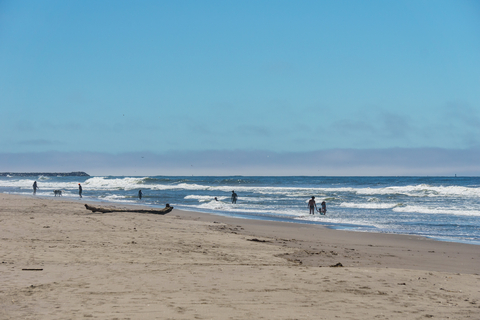Writing a Cozy Set on the Big Island of Hawai‘i
By Leslie Karst, author of Molten Death
When A Fish Out of Water Meets an Active Lava Flow
“Will we sip Mai Tais on white sand beaches under azure skies with puffs of trade wind clouds above? Will the strains of ukuleles and sweet falsetto voices float to us from a nearby tiki bar, brightly festooned with fish nets, flower leis, and replicas of the mo‘ai of Rapa Nui?”
This is what many folks expect to find when they visit Hawai‘i—either in person or as an armchair traveler via a cozy mystery story set in that tropical clime. And it’s also what Valerie Corbin, the protagonist of my new Orchid Isle mystery, Molten Death, is expecting when she arrives on the Big Island of Hawai‘i for what she hopes will be a relaxing and therapeutic vacation.
But it is not to be. What she finds instead is the very real, down-to-earth town of Hilo, where rain is as common as sunshine, and where you’re more likely to find a chicken coop or basketball hoop in someone’s yard than a tiki.
And then there’s the corpse being covered over with hot, flowing lava that Valerie encounters in chapter one of the book.
Molten Death has been a long time in the making. I came up with the idea for the story after I—like Valerie—was taken aback on my first visit to Hawai‘i at how very different the Big Island was from what I’d imagined it would be from all the Hollywood movies and glossy tourist brochures I’d seen over the years. But it was different in a captivating, almost magical way.
So what is it that makes the island so very special? I’d argue that it’s the presence of two active volcanoes (three, if you count Hualālai, which looms over the tourist town of Kailua-Kona and last erupted in 1801—just yesterday, in geologic terms). This ongoing volcanic activity has shaped not only the island’s geology, flora, and fauna, but also the culture of the intrepid Polynesians who made the long voyage from the South Pacific to the archipelago by outrigger canoe some eight hundred years ago.
Living in a place where at any moment the land can tremble and shake and where molten rock can spew from the depths of the earth and come rushing down the mountain towards your village will have an enormous impact on how you view life. Dances, chants, and intonations to Pele with her streaming hair of fire become all important in an attempt to appease the volcano goddess and implore her to spare your family, your community, your land. Even today, inhabitants of the Big Island pay respect to Pele by leaving her offerings of gin and woven leis of ti intertwined with ‘ōhi‘a lehua blossoms along the rim of Kīlauea crater.
The presence of the active volcanoes has affected the culture in other ways, as well. Much of the southern part of the Big Island—the area most threatened by volcanic activity—is rural and not nearly as economically prosperous as the northern Kohala Coast, home to luxurious hotels and grand golf courses. And many of the island’s long-time residents are angry at what they see as desecration of land they view as sacred to their culture and history—not just by those hotels and golf courses, but also by the observatories atop Maunakea and the geothermal energy plant operating down in Puna.
And then there’s the history of immigration to the Hawaiian islands, which has led to a society all its own. Long after the original Polynesians came the whalers, then the missionaries and other haoles, who ended up in control of vast sugarcane and pineapple plantations. Next came wave after wave of workers brought in to work those plantations, including Chinese, Japanese, Portuguese, and Filipinos. As a result, the Big Island is now one of the most culturally diverse places in all the country.
So when I set out to write a cozy mystery set on the “Orchid Isle,” my biggest desire was to bring to readers a picture of what the place is truly like—not for tourists, but for those who actually reside here. But although I’ve lived half time on the Big Island now for sixteen years (and started making annual visits in 1990), I had some trepidation about setting a mystery series here. The last thing I wanted to do was engage in cultural appropriation, for it’s not my place to tell the story of someone who was born and raised here. So rather than write about a protagonist who’s “FBI,” as they in these parts (from the Big Island), I created Valerie, a gal from Los Angeles who’s seeing Hawai‘i for the first time and learning about the island and its culture along with my readers—a fish out of water story.
At first she’s sorely disappointed. This is not what Hawai‘i’s supposed to be like, she fumes after she and her wife Kristen spend their second soggy day in Hilo. But then Kristen’s friend, tattooed local boy, Isaac, takes them on a tour of sights most tourists don’t get a chance to see, including a hike out to the active lava flow—where Valerie alone witnesses a human leg being covered over by molten lava.
But when it becomes clear that both Kristen and Isaac believe she merely imagined the experience, Valerie sets out to both prove her sanity and solve the mystery of the body in the lava. And in the process, she comes to understand what is is that is so very special and magical about the “Orchid Isle.”
For more by Leslie Karst, visit her website.
Click here for more blog posts on The Strand!

